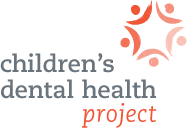Fluoride & Fluoridation
Fluoride & Community Water Fluoridation (CWF)
 Fluoride is a mineral that exists naturally in public water supplies, but usually at a concentration that is too low to protect teeth from cavities. This is why so many community water systems add additional fluoride — a process called “fluoridation.” Community water fluoridation (CWF) reduces the rate of tooth decay by about 25 percent over a person’s lifetime. Both children and adults benefit from drinking fluoridated water.
Fluoride is a mineral that exists naturally in public water supplies, but usually at a concentration that is too low to protect teeth from cavities. This is why so many community water systems add additional fluoride — a process called “fluoridation.” Community water fluoridation (CWF) reduces the rate of tooth decay by about 25 percent over a person’s lifetime. Both children and adults benefit from drinking fluoridated water.
For 70 years, CWF has been an effective and safe way to reduce the rate of tooth decay. Even though fluoride toothpaste is widely used by Americans, studies in recent years continue to show that drinking water or other beverages with fluoride maximizes protection from cavities. The Centers for Disease Control and Prevention (CDC) supports fluoridation and named this practice one of its “10 great public health achievements of the 20th century.” The leading health and medical organizations join the CDC in supporting fluoridation. Individuals who have served as U.S. Surgeon General have consistently expressed their support for fluoridation.
A CDC-commissioned study found that every $1 invested in fluoridation saves $38 by reducing the need for dental fillings, crowns or other treatments. Studies in Colorado, Louisiana, New York and Texas confirm that fluoridation saves money for families and taxpayers.
Opponents of fluoridation often make claims or assertions that misrepresent what the scientific evidence shows. The National Research Council has issued four reports on fluoride or fluoridation (including two since 1993), and none of them has voiced concerns about fluoride at the levels used for water fluoridation. In addition, the CDC reports: "Many research studies have proven the safety and benefits of fluoride."
For more information about training and technical assistance to support advocates of community water fluoridation, contact Matt Jacob at the Children's Dental Health Project (CDHP) at [email protected].
 HELPFUL RESOURCES:
HELPFUL RESOURCES:
- "Learn and Share" Fact Sheets & Tools
The Campaign for Dental Health, a project managed by the American Academy of Pediatrics has a variety of downloadable fact sheets, posters and other tools to help health professionals educate their patients and communities. The Campaign also has a sister site with information and resources in Spanish.
Few health topics have been studied as thoroughly as fluoride and fluoridation. This Q&A by the Children’s Dental Health Project provides answers to questions that frequently arise, drawing on the research that has been done.
Who decides within a community whether the local water system will be fluoridated? What legal authority do states, cities or counties have? And what role do federal health agencies perform with regard to fluoridation? These and other questions are answered in a 2015 issue brief produced by the Network for Public Health Law.
In this 2015 report, the Water Research Foundation examined nine common concerns that critics raise about the safety of adding fluoride to drinking water. The Foundation concluded that "a balance of scientific studies showed that none of these issues poses a risk to public health at CWF levels."
This one-pager provides brief statements from four governmental, medical or dental organizations that have examined the research behind fluoridation, its safety and its benefits. Public health advocates can use this as a handout for policymakers or stakeholder groups.
- Fluoridation: How States Rank
By the end of 2014, approximately 211 million Americans had access to drinking water that was fluoridated to help prevent tooth decay. Learn more and see where your state ranks in making fluoridated water accessible to its residents.
Is the United States the only nation where fluoridation is used to prevent cavities? No. Although it started in the U.S., fluoridation is a strategy that Canada, Brazil, Ireland and many other countries have embraced as a proven practice for improving health. This report explores the 20+ nations around the globe that operate programs to add fluoride to drinking water.
This report examines how The Pew Charitable Trusts has strengthened advocacy for community water fluoridation. Public health advocates will learn the various roles that Pew has performed to support fluoridation, and the important lessons that should inform our ongoing efforts to advocate for this proven form of prevention.
